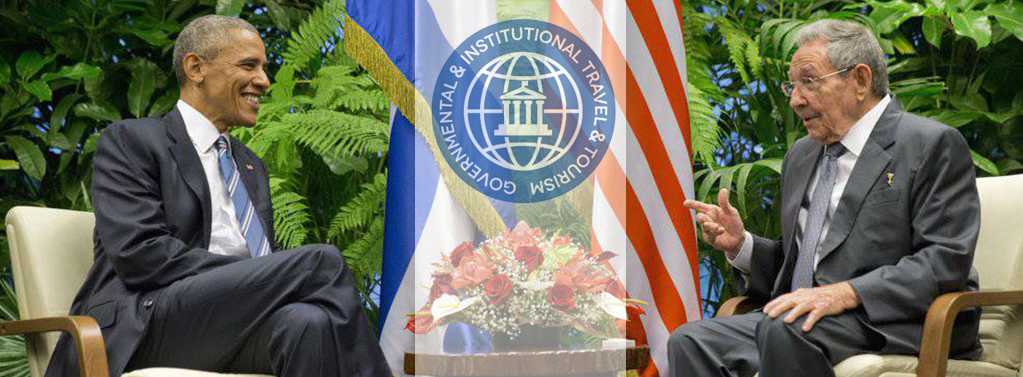
In the middle of the 20th century, during the early stages of the Cold War, the tension between the Western bloc, led by the United States, and the Eastern bloc, led by the Soviet Union (USSR), triggered a series of conflicts on all continents, one of the most important being the outbreak of the Cuban Revolution (1953-1959), which ended with the victory of the communist revolutionaries, the US trade embargo on the country and the consequent rapprochement of the new Cuban government to the postulates of the USSR.

This triggered the practically total rupture of diplomatic relations between the Cuban and US governments, even involving third countries aligned with the US. The long and important crisis between Cuba and the US was also punctuated by moments of great tension between the two countries, such as the Bay of Pigs Invasion in 1961, the Cuban Missile Crisis in 1962 or the Invasion of Granada in 1983.
The constant disputes between Cuba and the U.S. led to a large number of diplomatic meetings with the aim of easing tensions between these two neighboring countries. However, and in spite of the fall of the USSR in 1991, both the Cuban regime and the US continued to maintain an important armed peace, in which there were constant disagreements.
However, both the arrival of President Barack Obama to the White House and the replacement of Fidel Castro by his brother Raul eased the tension between the two countries, and what has come to be known as the "Cuban thaw" began. The Obama Administration initiated a series of diplomatic tactics that brought Cuba and the U.S. to a significant rapprochement, with the reopening of embassies in Washington and Havana.
In 2015, at the Seventh Summit of the Americas, held in Panama, Barack Obama and Raúl Castro staged, in person, the rapprochement between Cuba and the US, with a small meeting between the two, in which certain economic relations were restored and certain aspects of the historic US embargo were eliminated.
The historic moment came soon after, when the following year, in March 2016, and 88 years after a U.S. president last set foot on Cuban territory, Barack Obama, along with First Lady Michelle Obama and part of his family, landed at Havana International Airport at noon, with the aim of holding an important bilateral summit with his counterpart Raúl Castro. Upon alighting from Air Force One, which was accompanied by two U.S. Air Force C-17 aircraft, the U.S. delegation was received with honors by Cuban Foreign Minister Bruno Rodriguez, Foreign Ministry officials and members of the U.S. Embassy in Havana.
The size of the delegation was also historic, as the U.S. President was accompanied by more than 800 people, including advisors, protocol personnel, security team, businessmen and even kitchen staff. They were joined by more than 1,500 press reporters from all over the world, which caused a real collapse of hotels in Havana and surrounding areas.
The visit began with a stroll through the historic center of Havana and a visit to the Cathedral, where they were received by the archbishop. Shortly later, after a guided tour of downtown Havana and a large deployment of Cuban-US security, the Obamas had dinner in private at the San Cristobal restaurant.
After staying at the US Embassy, the next day began the meeting with Raul Castro, as well as a meeting in which US and Cuban businessmen also participated. The meeting also attracted numerous diplomats from other countries, as well as the British rock band Rolling Stones, who gave a free concert in Havana's Sports City.
The result of this historic summit, in addition to the thaw between the two nations, resulted in the arrival of more than 250,000 U.S. tourists in 2017, bringing in more income than, for example, Cuba obtains with its sugar exports. In addition, hotel chains such as Marriott and Starwood began operating in Cuba, as well as telephone companies such as AT&T, which reflects that this type of travel not only has a positive impact at the diplomatic level, but also, to many other effects, on the destinations.



